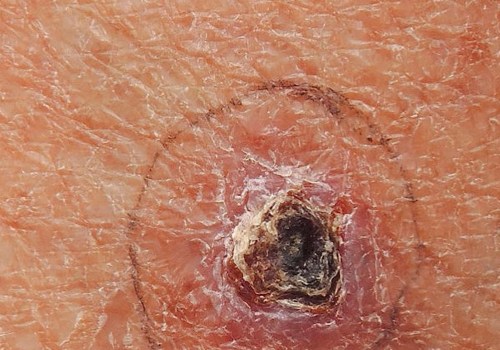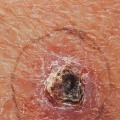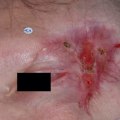Melanoma is a type of skin cancer that can be life-threatening if not detected and treated early. It is essential to be aware of the signs and symptoms of melanoma so that you can recognize it and seek medical attention as soon as possible. The most common sign of melanoma is a change in the size, shape, color, or feel of a mole. A mole may also become itchy, bleed, or ooze.
Other signs of melanoma include the appearance of a new mole or a spot on the skin that looks different from the other spots. The ABCDE rule is a helpful way to remember the signs of melanoma:
- Asymmetry: One half of the mole does not match the other.
- Border: The edges of the mole are irregular, ragged, notched, or blurred.
- Color: The color is not the same all over and may include shades of brown or black, or sometimes with patches of pink, red, white, or blue.
- Diameter: The spot is larger than 6 millimeters across (about ¼ inch – the size of a pencil eraser), although melanomas can sometimes be smaller than this.
- Evolving: The mole is changing in size, shape, or color.
Your doctor will examine your skin and may take a biopsy to determine if it is cancerous. Early detection and treatment are key to successful treatment of melanoma. If you have a family history of melanoma or have had sunburns in the past, it is especially important to be aware of any changes in your skin and to see your doctor for regular check-ups.
Risk Factors for Melanoma
In addition to being aware of the signs and symptoms of melanoma, it is important to understand the risk factors for developing this type of skin cancer.Risk factors include:
- Excessive exposure to ultraviolet (UV) radiation from the sun or tanning beds.
- Having fair skin, light hair color, and blue eyes.
- Having many moles or unusual moles.
- Having a family history of melanoma.
Conclusion
Melanoma is a serious form of skin cancer that can be life-threatening if not detected and treated early. It is important to be aware of the signs and symptoms so that you can recognize it and seek medical attention as soon as possible.It is also important to understand the risk factors for developing this type of cancer so that you can take steps to reduce your risk. Early detection and treatment are key to successful treatment of melanoma.









